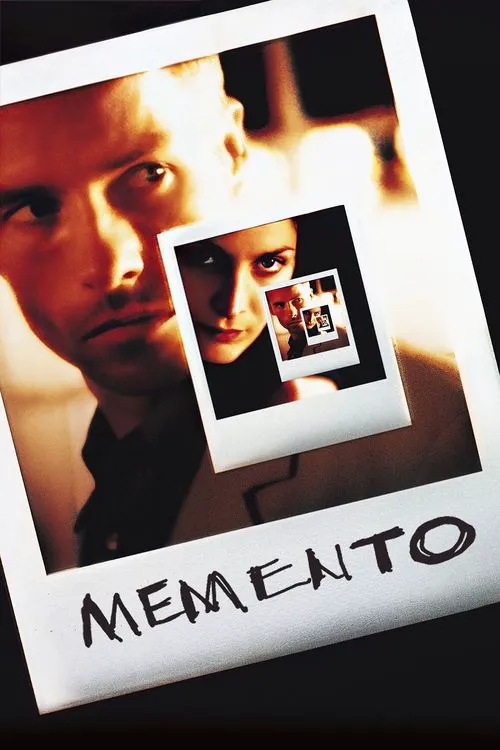Memento

Plot
Leonard Shelby is a man defined by his mission. He is driven by a singular purpose: to avenge the brutal rape and murder of his wife. But this is no ordinary man, nor is his mission a straightforward one. Leonard's world is a complex, often contradictory place, where memory and reality are constantly intertwined and manipulated. Leonard's condition is a rare, untreatable form of short-term memory loss, which he himself can't fully understand. He can recall minute details of his life before the accident that left him with this affliction, but anything that occurs after he's been injured escapes his recollection. He has no memory of why he's doing what he's doing, where he is, or even what he's doing in the next few minutes. As a result, Leonard has developed a system to cope with his condition. He takes Polaroid photographs of everything he sees, from people and places to events and objects. He leaves notes and messages for himself, hoping to jog his memory and piece together the fragmented fragments of his past. But even with these aids, he often struggles to find his bearings. Leonard's narrative is presented in reverse chronological order, with each event unfolding in the sequence in which he remembers it, rather than in the order in which they actually occurred. This visual storytelling technique, pioneered by Christopher Nolan, creates a complex, disorienting effect, mirroring the disorientation and confusion that Leonard experiences. Despite his efforts to recover his memories, Leonard's quest is constantly thwarted by his own condition. His attempts at recollecting events are hampered by his own self-manipulation. He modifies his own memories, manipulating the information to fit his preconceptions, creating an unreliable narrative that undermines any sense of veracity. Leonard's problem is less about recalling specific events, and more about understanding the intent behind them. As Leonard navigates the complex web of his own deception, he encounters various individuals who contribute to his misperceptions and misunderstandings. There's Nathaniel, the disconcertingly apathetic hotel receptionist; Leonard's new friend Teddy, whose seemingly kind and benevolent demeanor belies a more sinister purpose; and the mysterious woman, Natalie, who may hold the key to unraveling the mystery that Leonard has built around himself. Teddy's enigmatic figure appears particularly significant, particularly given his role in Leonard's fragmented recollections. Their relationship appears to be a strained one, plagued by a constant dance of distrust and vulnerability. Leonard becomes intensely dependent on Teddy's counsel, seeking reassurance in the face of uncertainty. His presence may hold a crucial key, perhaps to unraveling the mysteries of his own identity and that of his missing wife. Leonard's recollections constantly evolve and change, reflecting the uncertain and fractured nature of his condition. His narrative appears to be an ongoing test of identity, with characters and events blurring into a collective mishmash that can't be unraveled without the aid of other recollections. Without revealing too much of the ambiguous and evolving conclusion, it's clear that Leonard's ultimate success hinges on the mysterious fate of his missing wife and the figures he encounters along the way. This cat and mouse game is constantly reflected in his incomplete and ever-evolving narrative, blurring the line between truth, fiction, and the blurred interpretation that Leonard must face the ambiguity of his own memory.
Reviews
Recommendations




